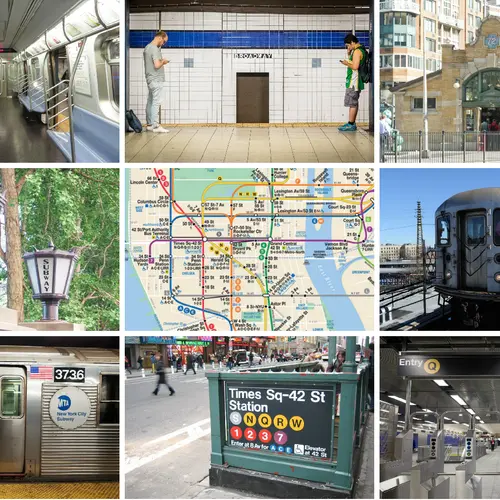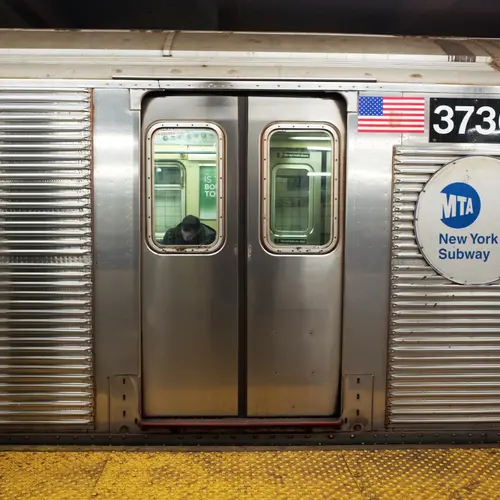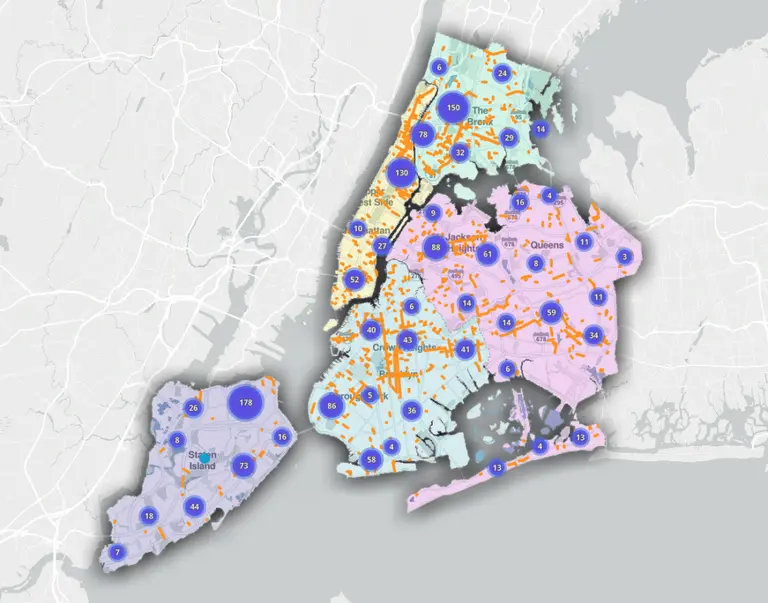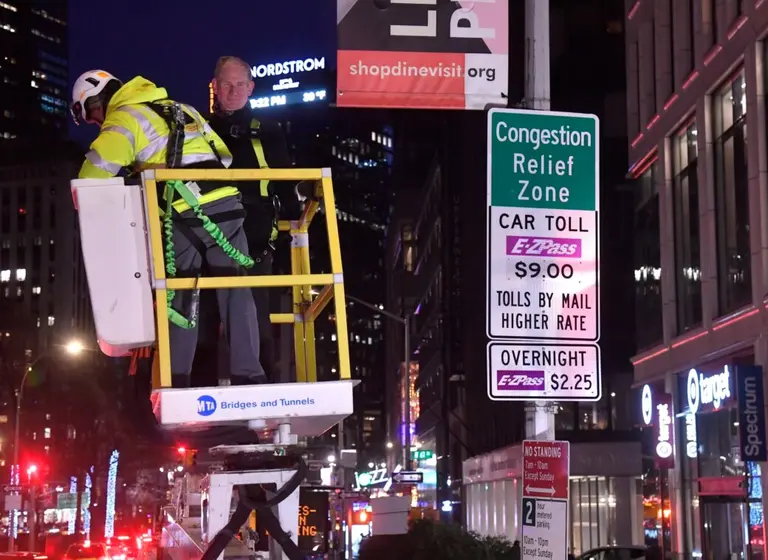The New York City subway in fascinating facts and figures

When it comes to New York City’s subway system, you may think you know the letters (A,B,C,D,E,F,G,J,L,M,N,Q,R,S,W,Z) and numbers (1 through 7), all too well. But a few of the fun facts and staggering stats that add up to the seventh busiest public transit system in the world might surprise you. From the longest route (the A line is 31 miles) to the world’s highest rapid transit station at Smith-9th Streets (it’s 88 feet above street level), there are plenty of figures that even the most well-versed New Yorker likely doesn’t know.

Image © 6sqft
In 2016, 5.7 million people–the highest since 1948–rode the subway on the average weekday. In that year, 1.757 billion people rode the subway.
That number makes the NYC subway system by far the busiest in the United States. But it’s only the seventh-busiest in the world. The teemingest is Beijing with nearly double the number of riders in a year (3.660 billion), followed by Tokyo (3.411 billion), Shanghai (3.401 billion), Seoul (2.620 billion), Guangzhou (2.568 billion) and Moscow (2.384 billion).
Record high: The only time the city’s subway system has surpassed its 2015 high was during an almost unbroken period from 1926 through 1948. The all-time, as yet untoppled, annual record was 2.067 billion passengers in 1946.

It’s the mileage: The city’s fleet traveled 358 million miles in 2016
The longest route with no change of trains: The A Line runs from 207th Street in Manhattan to Far Rockaway in Queens–more than 31 miles.
The longest uninterrupted run between stations is the A Line’s run between the Howard Beach/JFK Airport and Broad Channel stations in Queens (3.5 miles).
It’s the mileage, 2.0: With the opening of the 7 Line extension to 34th St.-Hudson Yards in 2015 and the new Second Avenue Q Line in 2017, the subway system now contains over 665 mainline track miles.
Laid end to end, NYC Transit train tracks would stretch from New York City to Chicago.
The subway system opened on October 27, 1904 with 28 stations in Manhattan; there are now 472 stations, most of which were built by 1940.
The first female subway conductor was hired in 1917.

The lower Manhattan skyline from the Smith and 9th Street subway platform. Image: wikimedia commons.
The system’s highest station above ground is the one at Smith-9 Streets on the F/ G Line in Brooklyn. At 88 feet above street level, it’s actually the highest rapid transit station in the world. The deepest station is 191 Street on the 1 Line in Manhattan at a sepulchral 180 feet below street level.
The worst subway accident in the city’s history happened in 1918 when a conductor who was filling in for a striking employee lost control of his train while entering a tunnel on Brooklyn’s Malbone Street. The resulting crash killed 97 people and injured over 200 others.
In 1916 a worker excavating under the East River survived being sucked through the river and shot up into the air after the pressurized tunnel he was digging cracked.

Photo via Norris Wong/Flickr
In 2016 the busiest subway station, not surprisingly, was Times Square (N/Q/R/W/S/1/2/3/7/ 42 St A/C/E) with 64,531,511 annual riders passing through.
If that’s your daily stop, consider this: The MTA will email or fax you a “late letter” of explanation if a train delay makes you late for work.

Subway tokens, now just memorabilia. Image: K.L. via Flickr.
The subway began accepting only tokens instead of coins in 1953 when the fare was raised to 15 cents because the turnstiles were only able to accept one type of coin. Thieves were known to intentionally jam turnstiles with coins, then (ew?) use their mouths to suck out tokens that were stuck in the slots. In response, token booth clerks took to (ew!) sprinkling the slots with chili powder or mace.
Tokens were permitted until spring of 2003, when they were officially deemed obsolete in their 50th year.

MetroCard swipes are tracked.They are said to have been successfully used as an acceptable alibi in criminal investigations.
The first air-conditioned subway cars were rolled out in May of 1967, but all trains didn’t have a/c until 1993 (the 7 train was the last to cool off).
In an attempt to curb graffiti officials at one point painted 7,000 subway cars pure white–which predictably had about the same effect as trying to curb drawing by handing out clean, white sheets of sketch paper.

Photo © Stephen Mallon
In 2008, 44 decommissioned subway cars were dumped into the ocean to function as an artificial reef.
Michael Jackson’s music video for “Bad” was filmed at the Hoyt-Schermerhorn subway station.
In 1993, 16-year-old Keron Thomas impersonated a train conductor and drove an A train for three hours, safely shuttling passengers to their destinations before getting busted by accidentally triggering an emergency brake. He received several months of probation. Thomas had no bad intentions other than really, really wanting to drive a train.
Getting the point: All train conductors must point to a black-and-white striped board in the middle of every subway station when their train comes to a stop. The conductor does this to assure that the train has stopped in the right place–and that he or she is paying attention.
In 2013 a pair of clever New Yorkers shook up the daily subway grind by standing in stations holding signs beneath the striped bar when trains approached that read, “Point here if you are dead sexy,” and other irreverent instructions. If conductors weren’t paying attention before, they had a better-than-usual reason to do so.
RELATED:



































